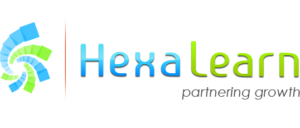SCORM Files Per Language
It appears very easy: translate message, swap media, export new SCORM and upload to the LMS. But also for learning developers, this approach can insidiously increase work, balloon costs, and add complexity to upkeep when developing multilingual eLearning training courses. Allow us find out how this affects the eLearning advancement procedure and exactly how Training Developers and programmers can build much more scalable multilingual solutions.
1 Development Expenses: Time, Equipment, And Variation Control
Translation And Localization Bottlenecks
- Each program update– be it a brand-new test, photo, or conformity alteration– suggests rebuilding every language translation. Developers require to repackage, re-test, and re-upload each file manually, reducing version cycles down.
- Localization teams have to handle language-specific assets (sound, video, subtitles, text on-screen), all of which require designer treatment for every single SCORM result.
Authoring And SCORM Maintenance
- Designers frequently spend hours reconfiguring manifests, changing LMS monitoring, and verifying communications for every variation.
- Each language becomes its own “mini-project,” increasing QA and LMS testing cycles for programmers and customers alike.
Storage And Release Challenges
- Preserving several SCORM versions takes in additional repository space and LMS bandwidth. Programmers must additionally maintain consistent documents structures across all variations to prevent complication.
2 Indirect Growth Prices: Complexity And Risk
Version Drift Across Languages
- When designers manage numerous SCORM results, updates might not roll out uniformly. Learners in various areas could access obsolete variations– a concern that shows improperly on both L&D and conformity groups.
Greater Assistance Load
- Pests unique to one language version commonly call for developer-level debugging.
- Dissimilar SCORM settings can trigger inconsistent LMS monitoring or completion reporting– draining pipes advancement and assistance sources.
Scalability Roadblocks
- For eLearning developers, every extra language indicates brand-new writing, QA, and product packaging jobs. As multilingual demand expands, preserving parity across versions becomes unsustainable.
3 Influence On Understanding Experience
Delayed Rollouts
- Learners may wait weeks for updated versions in their language since designers are hectic rebuilding several SCORMs.
Inconsistent Learning High Quality
- Differences in navigating tags, subtitles, or UI formats across versions can puzzle students and break style uniformity.
- Without linked growth workflows, access components (alt text, records, inscriptions) might vary in top quality from one language to an additional.
Smarter Strategies For Establishing Multilingual eLearning
Create One Training Course– Publish in Lots Of Languages
New writing software application allow designers to build a solitary SCORM bundle with language option controls. This strategy maintains the course reasoning streamlined but saves the translations as modular resources– making it much less complex to obtain constant outcomes throughout languages.
Funded web content – post continues listed below
Trending eLearning Authoring Tools
Externalize Text And Media Properties
By keeping message, inscriptions, and UI tags in exterior resource data (e.g., XLIFF, JSON, XML) the SCORM can be modified by designers in regards to translations without recreating the whole SCORM. This approach promotes quicker updates and boosted cooperation between localization teams and Training Designers.
Take Advantage Of LMS Localization Features
Numerous LMS platforms support multilingual UI elements, notifications, and even program titles. Designers can concentrate on content-level localization rather than duplicating whole bundles.
Automate QA And Version Control
Integrating version control (e.g., Git, SVN) and automation tools assists eLearning programmers track modifications, restore multilingual training courses successfully, and protect against version drift. Automated screening scripts can look for busted links, missing out on subtitles, or inconsistent manifests throughout languages.
The Growth ROI
Mounting the concern from an advancement point of view assists stakeholders recognize business instance:
- Decreased work
For eLearning developers: fewer rebuilds and hands-on packaging jobs. - Faster updates
Across all languages when regulatory or content changes take place. - Consistent learner experience
Throughout areas, enhancing quality and interaction. - Lower long-lasting upkeep costs
Enabling groups to scale global knowing programs efficiently.
Conclusion
For eLearning designers, having different SCORM documents by language can make a straightforward localization task right into an upkeep frustration. The true potential is in reconsidering developing multilingual eLearning layout– accepting modular, automation-centered design principles that simplify localization, assurance variation consistency, and preserve quality at range.
Via the implementation of central web content designs, LMS localization capabilities, and automation platforms, growth teams are able to bypass tedious SCORM packaging rep to concentrate on what is crucial: the layout of compelling, obtainable, and efficient discovering experiences for globally audiences. This unified method not only simplifies material delivery yet also makes sure consistent student interaction and performance throughout all languages and areas.
